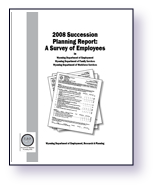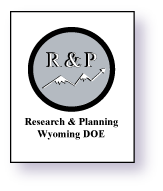Chapter 11: Conclusions
by: Lisa L. Knapp, Research Analyst
One of the main purposes of succession planning is to identify groups of employees that state an intention to leave due to retirement or for some other reason. Another purpose is to identify factors that might either influence the employee to not leave, delay exit, or, in the case of retirees, induce returning to work in some capacity after retirement. This will continue to be important in the future as the state’s employees continue to age. Currently, nearly one in three employees in these three agencies — the Department of Employment, Department of Family Services, and the Department of Workforce Services — is age 55 or older and another third are between the ages of 45 and 54. This means that in the next 20 years 60% of these employees could potentially retire. Without a strategy to transfer knowledge, they will take with them years of experience that will be difficult to replace.
This study was initiated by management in three state agencies to investigate employee plans and attitudes toward their work environments. Because of a high response rate, we are confident that the results of this study can largely be generalized to all employees in these agencies.
Although there are some things over which agency management has little direct control, such as wages and benefits, this research has shown several areas in which action can be taken that may result in greater employee satisfaction.
There are other avenues of study that we have not covered in this report. In the future, it would be useful to investigate gender differences in workplace satisfaction. We will also be able to test the idea of predictive validity in the near future. As described in this report, Research & Planning can use our administrative databases to determine whether respondents who said they planned to leave their jobs did so at a later time, and what were the characteristics of those who changed jobs.

